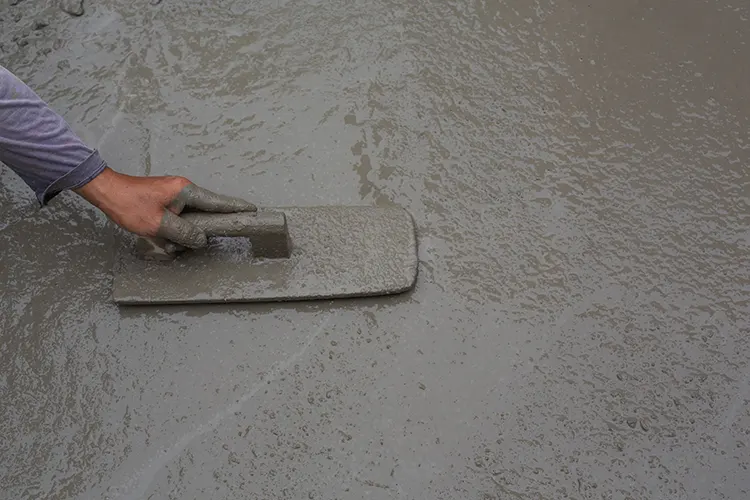Ultra-High Performance Concrete (UHPC) is changing the landscape of modern construction. With exceptional durability, superior strength, and resistance to environmental factors, UHPC is being widely adopted for infrastructure projects, commercial buildings, and high-end residential developments. But does it justify the higher cost? This article provides a cost-benefit analysis of UHPC, helping property owners, developers, and contractors in Long Island, Brooklyn, and Queens determine whether it’s the right choice for their projects.
When Does It Make Sense to Use UHPC?
UHPC offers advantages over conventional concrete, but its application depends on several factors. Here’s when it makes sense to invest in this high-performance material:
1. Infrastructure & Heavy-Load Projects
UHPC is ideal for bridges, highways, tunnels, and marine structures, where extreme durability and strength are necessary. Its superior load-bearing capacity makes it perfect for high-traffic areas like Brooklyn’s expressways and Long Island’s coastal infrastructure.
2. High-Rise & Commercial Buildings
In dense urban areas like Queens and Brooklyn, where high-rise structures dominate the skyline, UHPC provides improved structural integrity, reducing maintenance and increasing the lifespan of buildings.
3. Coastal and Harsh Weather Environments
New York’s climate presents challenges such as freeze-thaw cycles, heavy rains, and saltwater exposure along the coastlines of Long Island and Queens. UHPC’s resistance to chloride penetration and corrosion makes it an excellent choice for projects in these locations.
4. Projects Requiring Slimmer, Lighter Designs
UHPC allows for thinner walls, longer spans, and unique architectural elements while maintaining structural strength. This is beneficial for modern residential and commercial projects where space efficiency matters.
5. Low-maintenance & Long-Term Durability Needs
For property owners and municipalities looking to reduce repair costs and extend the lifespan of structures, UHPC minimizes maintenance, making it a smart investment in the long run.
Short-Term vs. Long-Term Benefits of UHPC
Short-Term Considerations
✔ Higher Initial Cost – UHPC can cost three to ten times more than traditional concrete due to its specialized materials and manufacturing process.
✔ More Complex Installation – Working with UHPC requires skilled labor and specialized equipment, increasing upfront project costs.
✔ Limited Local Suppliers – In Long Island, Brooklyn, and Queens, UHPC suppliers and contractors are fewer compared to standard concrete, which may impact availability.
Long-Term Benefits
✔ Extended Service Life – UHPC structures last up to 75-100 years with minimal maintenance, reducing lifecycle costs.
✔ Superior Strength & Durability – With compressive strengths over 20,000 psi, UHPC resists cracking, corrosion, and weathering better than standard concrete.
✔ Reduced Maintenance & Repair Costs – Unlike traditional concrete, UHPC does not require frequent resurfacing or patching, making it a cost-effective choice over time
✔ Energy Efficiency & Sustainability – UHPC’s higher density improves insulation, contributing to lower heating and cooling costs in buildings.
✔ Enhanced Safety Features – Its high fire resistance and ability to absorb shock waves make it a preferred choice for disaster-resistant structures.
Industry Expert Opinions on UHPC’s Future
Industry professionals predict that UHPC will gain wider adoption in urban areas like NYC, Long Island, and Brooklyn due to its resilience against climate change impacts and urban infrastructure challenges. According to the American Concrete Institute (ACI) and Federal Highway Administration (FHWA), UHPC is expected to play a significant role in:
✔ Smart City Developments – New York is investing in resilient, energy-efficient buildings where UHPC can contribute significantly.
✔ Next-Generation Bridges & Transportation Projects – The NYC DOT has already incorporated UHPC in pilot bridge projects due to its extended lifespan.
✔ Sustainable Building Initiatives – With a focus on carbon footprint reduction, UHPC’s longevity and material efficiency align with future green building codes.
High-Performance Concrete vs. Ultra-High Performance Concrete: What’s the Difference?
Concrete technology has evolved significantly, leading to the development of High-Performance Concrete (HPC) and Ultra-High Performance Concrete (UHPC). While both offer superior strength and durability compared to conventional concrete, they serve different purposes and come with distinct characteristics. This article will break down the key differences between HPC and UHPC, helping contractors, developers, and property owners in Long Island, Brooklyn, and Queens make informed decisions for their construction projects.
What is High-Performance Concrete (HPC) and Ultra-High Performance Concrete (UHPC)?
HPC is a specially designed concrete mix that exhibits enhanced performance in terms of strength, durability, and workability. Unlike traditional concrete, which focuses mainly on compressive strength, HPC is formulated to withstand harsh environmental conditions, reduced permeability, and improved resistance to wear and tear.
UHPC takes performance to an entirely new level. It is a reinforced composite material with significantly higher compressive strength, durability, and flexibility compared to HPC. The key differentiator is its ultra-dense microstructure, which makes it almost impermeable to water, chemicals, and environmental degradation.
Key Differences Between HPC and UHPC
| Feature | High-Performance Concrete (HPC) | Ultra-High Performance Concrete (UHPC) |
| Compressive Strength | 6,000 – 15,000 psi | 20,000 – 30,000+ psi |
| Durability | Enhanced over traditional concrete | Almost impermeable, extreme resistance |
| Flexibility & Ductility | Moderate | High – withstands extreme loads |
| Cost | More expensive than traditional concrete, but affordable | 3-10x higher than regular concrete |
| Common Uses | Bridges, high-rises, parking structures | Military structures, blast-resistant buildings, architectural designs |
Which One is Right for Your Project in Long Island, Brooklyn, or Queens?
Choosing between HPC and UHPC depends on your project’s specific needs, budget, and durability requirements.
✔ Use HPC if: You need stronger, more durable concrete than traditional mixes for bridges, high-rises, or parking garages.
✔ Use UHPC if: You require extreme durability, high strength, and minimal maintenance for coastal structures, military buildings, or architectural projects.
Still not sure which one is best for your needs? Call our experts to help you out now (347) 284-0280.
Final Verdict: Is UHPC Worth the Investment?
For property owners, developers, and municipalities in Long Island, Brooklyn, and Queens, UHPC presents a high initial cost but an undeniable long-term value. If your project demands longevity, durability, and minimal maintenance, investing in UHPC can save money in the long run while enhancing structural integrity.
Key Takeaways:
✔ UHPC is best for infrastructure, coastal areas, and high-rise buildings.
✔ While initial costs are high, low maintenance and long lifespan make it a smart long-term investment.
✔ Experts predict increasing adoption of UHPC in urban construction due to its unmatched performance.

